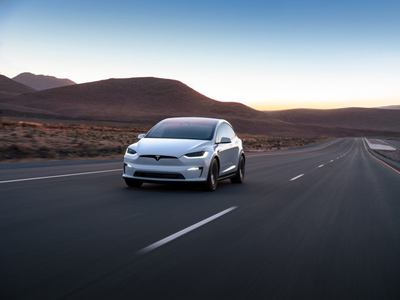Tesla sudden unintended acceleration events have caused a Greek resident to file a petition with the National Highway Traffic Safety Administration (NHTSA). According to the petition, the automaker should recall more than 1.6 million vehicles built since 2013.
The Tesla petition was submitted by Greek resident Costas Lakafossis, who describes himself as a mechanical and aeronautical engineer as well as an accident investigator.
The petitioner alleged all Tesla vehicles should be equipped with an "interlock that requires a brake application by the driver in order to shift from DRIVE to REVERSE to reduce the number of sudden unintended acceleration events."
Tesla Sudden Unintended Acceleration
The typical description of "sudden unintended acceleration" is a problem caused not by the driver but by electrical or mechanical malfunctions of the Tesla vehicle.
In cases of investigations and lawsuits regarding alleged Tesla sudden unintended acceleration incidents, acceleration problems may be caused by defects in the vehicles or by software errors that take control away from drivers.
A recent Tesla lawsuit dismissal is a good example of what is usually meant by "sudden unintended acceleration."
However, the Tesla petition seems to use the phrase to mean sudden acceleration caused by mistakes made by a driver when the accelerator pedal is applied instead of the brake pedal.
Known as "pedal misapplication," a driver believes they are pressing the brake pedal when they are in fact pressing the accelerator pedal.
According to the Tesla petition, pedal misapplication is due to a missing interlock feature and by specific "Autopilot features that contribute to increased likelihood of driver errors."
"Even when driven manually (not in Full Self-Driving mode), all Tesla cars using the Autopilot software implement various strategies of automatic braking, not only as a safety feature (i.e. to avoid an accident) but also as a feature that takes over some of the workload of the driver e.g. in stop-and-go traffic or when about to park," the petition said.
The petition said one feature provides the ability of the Tesla to stop and shift into reverse gear when the driver is ready to park, all without touching the brake pedal.
The petitioner alleged this is a "potentially dangerous 'party trick' used for testing related to moving toward full self-driving vehicles."
In other words, the petition alleged, Tesla drivers press the accelerator pedals instead of the brake pedals because the vehicle and automatic braking "encourages drivers to remove their feet from the pedals and enjoy a technologically advanced self-braking car."
In addition, the petitioner said automatic braking (not to be confused with automatic emergency braking) should only be used as a safety feature, not as a courtesy to drivers as Tesla allegedly does.
NHTSA has investigated more than 200 Tesla sudden unintended acceleration events in the past and found the incidents were caused by drivers pressing the wrong pedals (pedal misapplications).
But NHTSA safety regulators also said this about pedal misapplication: “There is also no evidence of a design factor contributing to increased likelihood of pedal misapplication."
The petitioner clearly disagreed and argued Tesla vehicles could be made safer in a way that will prevent or mitigate pedal misapplications.
Although the petitioner seeks a Tesla recall, that's not how NHTSA works. The petition is a "safety defect" petition to determine if the government should open a formal safety defect investigation into the alleged problem.
NHTSA will investigate the claims made by the petitioner and either grant or deny the petition to investigate.














